2024 Jaguar F-Pace Review: Fun, pretty and luxe, the big Jag's better with age

Pros: Engaging to drive; good looks; high-class cabin; crazy-good sport seats; big cargo area and generally more spacious than compact rivals
Cons: Pricier than compact rivals, smaller than midsize ones; base engine acceleration a touch off the pace; convoluted climate controls
The Jaguar F-Pace has now been around for quite some time – eight years have passed since we first got behind the wheel in far-flung Montenegro. While most vehicles would be well past their best years and already replaced by now, the 2024 Jaguar F-Pace is an example of something that has actually gotten better with age. Its infotainment technology is up to date and far easier to use than anything Jaguar Land Rover has offered before. Its cabin quality and design are better, the engines have been upgraded, and we even think the design tweaks made a few years ago improved upon an already knockout design.
In many ways, the F-Pace is reminiscent of another small SUV that’s thrived past the usual best-by date: the Porsche Macan. It too is fun to drive, with exceptional steering, sharp handling and compelling performance, especially from the six- and eight-cylinder models. They are both for SUV shoppers looking to enjoy their time behind the wheel (and look good doing it), and are OK paying more money than other compact luxury SUVs. There is one major difference, though: The F-Pace is not only much bigger than the Macan, it’s bigger than most of those other compact luxury SUVs. It’s closer to a midsize, with the closest size comparable being the Lexus RX. That grants it a spacious back seat and a surprising amount of cargo space.
We were honestly not expecting to like the F-Pace as much as we did during a recent test drive of the P400 R-Dynamic S. It seemed likely that all those years in between times behind the wheel wouldn’t have been kind. Far from it. We like it even better, and think those in the market for an SUV in its price range should give it a shot.
Interior & Technology | Passenger & Cargo Space | Performance & Fuel Economy
What it's like to drive | Pricing & Trim Levels | Crash Ratings & Safety Features
What's new for 2024?
Apple CarPlay and Android Auto can now be connected wirelessly. Jaguar also trimmed the F-Pace lineup down to three versions, all tied to a different engine. This results in the base price ballooning by $8,000 since the new base trim level is the R-Dynamic S. That wasn’t even available with the P250 base engine before. It remains the only option for the P400 engine.
Note that the 2025 Jaguar F-Pace will be carried over with the exception of the SVR, which will be exclusively available as the 575 Edition that gets an extra 25 horsepower. The price also goes up by $500. All other prices stay the same for 2025.
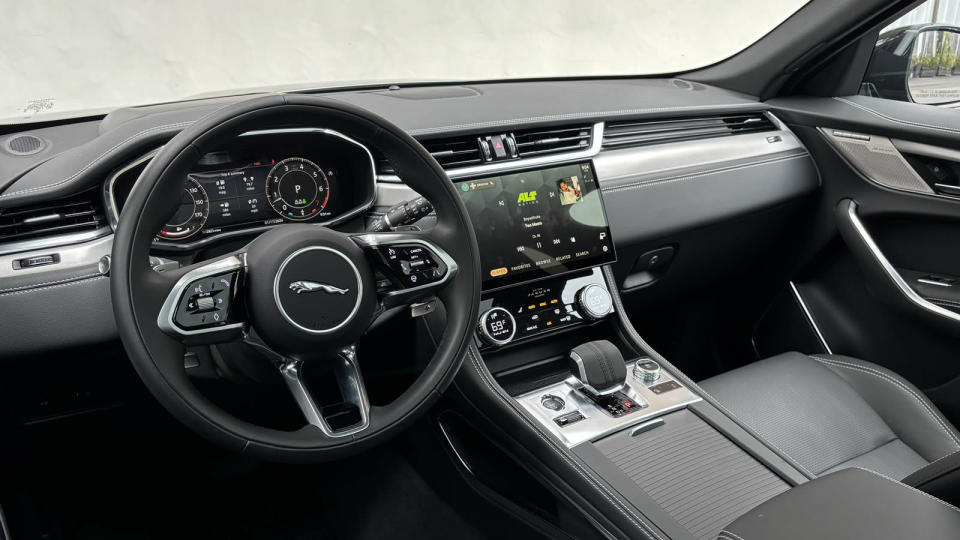
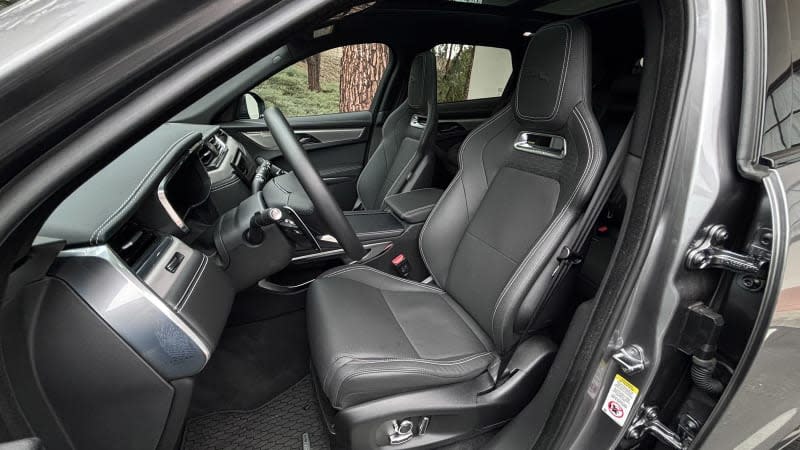
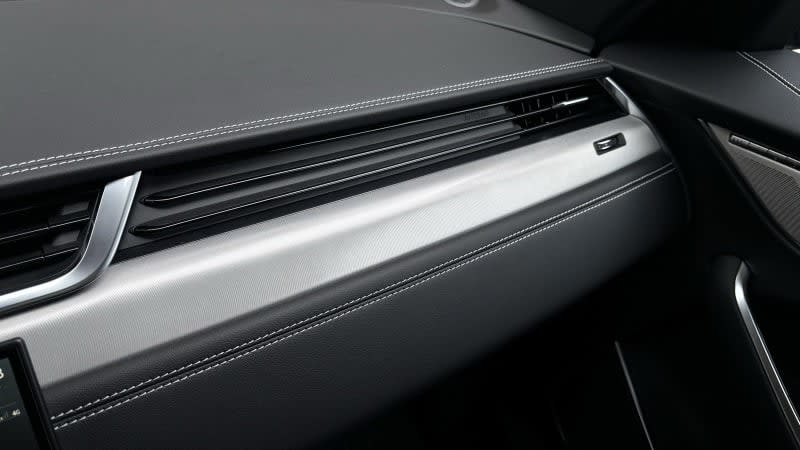
What are the F-Pace interior and in-car technology like?
Cabin quality in past model years of the F-Pace differed significantly depending on the trim level. Now, it’s a unified experience, with every version benefiting from padded, buttery-soft simulated leather on the dash, doors and center console. Real leather is standard for the seats, and looks sensational when you check the boxes labeled “Mars Red” or “Sienna Tan.” Now, those colors are tied to the Performance seat option, which isn't exactly cheap, but you do get some of the most shockingly good seats you’ll find anywhere, along with ventilation. They are firmly supportive, hold you in place well and are even narrower in depth, freeing up extra rear legroom.
Like most luxury SUVs these days, an all-digital instrument display is standard, but you have to shell out an extra $550 to choose from different layouts on a bigger, 12.3-inch screen and benefit from 3D navigation and other extra info. Every F-Pace gets the same 11.4-inch touchscreen running JLR’s latest Pivi Pro interface that now includes wireless Apple CarPlay and Android Auto. It may not be the easiest system to use, but it also isn’t difficult, and we haven’t experienced the sort of sluggish responses and glitches past JLR tech interfaces suffered from (including those originally in the F-Pace). Basically, you wouldn’t buy an F-Pace for its tech, but it shouldn’t prevent you from getting one, either. That said, the climate controls are needlessly complicated, especially the heated and ventilated seat controls.
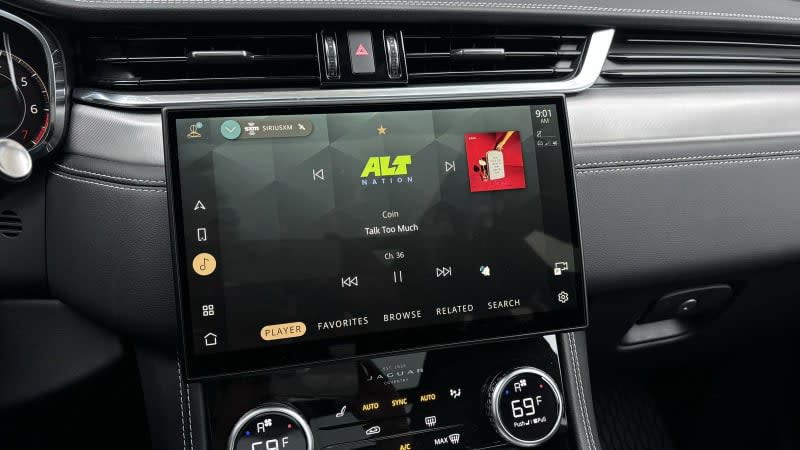
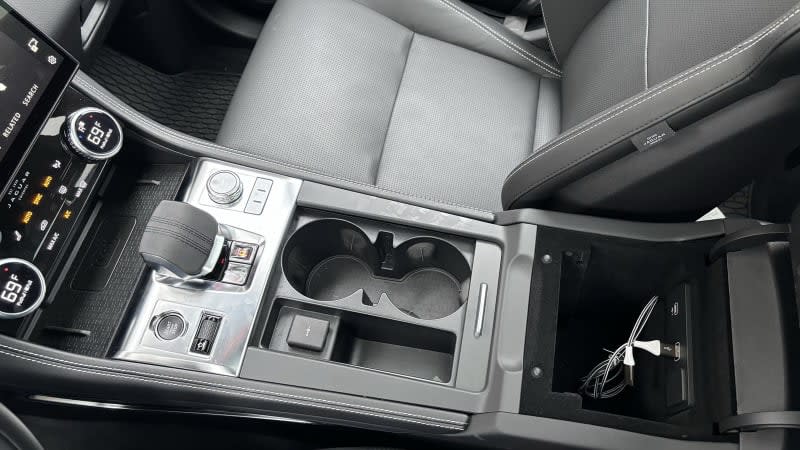
How big is the F-Pace?
The F-Pace basically falls in between the compact and midsize segments, so if you’re wondering why it costs more than the former, that’s a big reason why. Accordingly, you’re going to find considerably more space in the F-Pace than something like a BMW X3. Indeed, backseat legroom is more like that of a BMW X5, with plenty of room left over behind tall drivers. Headroom is a bit tighter than most SUVs in both the compact and midsize categories, but a 6-foot-3 occupant’s head still wasn’t grazing the ceiling.
Cargo space is similarly excellent. Today’s specs say it only has 26.6 cubic feet, but after running the F-Pace through our luggage test, we’re confident its original volume of 33.5 cubic feet is what’s applicable to what you’ll find in other SUVs. Our testing showed that it could not only fit our standard assortment of six suitcases, which is normal for a compact luxury SUV, but a 38-quart cooler and duffle bag as well. That’s what you can expect to find in family mobiles like the Honda CR-V and Toyota RAV4. Now, it’s not quite as big as various midsize SUVs, but then, that’s in keeping with the entire car. Basically, if you consider the F-Pace a compact, it has best-in-class cargo space. If it’s a midsize, and its price would align with those, it’s sufficient.
As for much smaller items, we have to mention the F-Pace's clever fold-up box that does a terrific job of keeping groceries from sliding all over the cargo area, and then helps you hoist it all into the house in one trip. Better still, it neatly folds up and stows away in specially designed indentation under the cargo floor. Brilliant! It's pictured below.
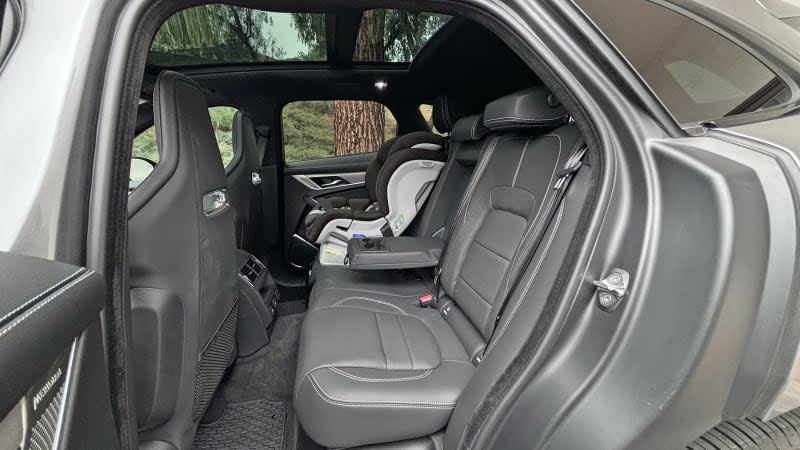
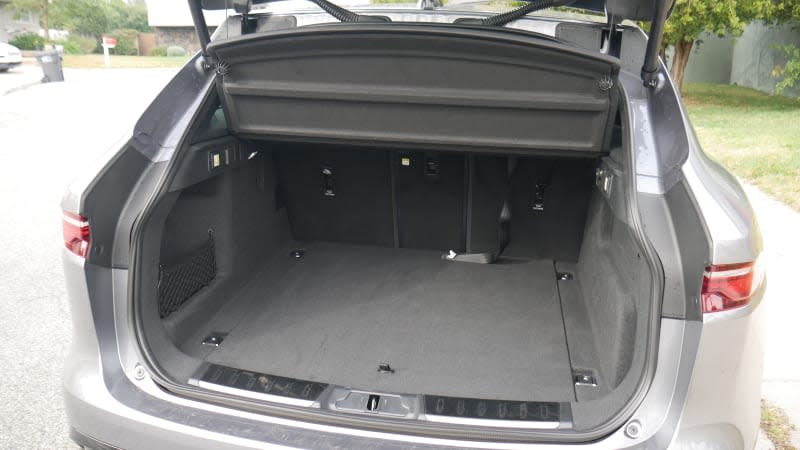
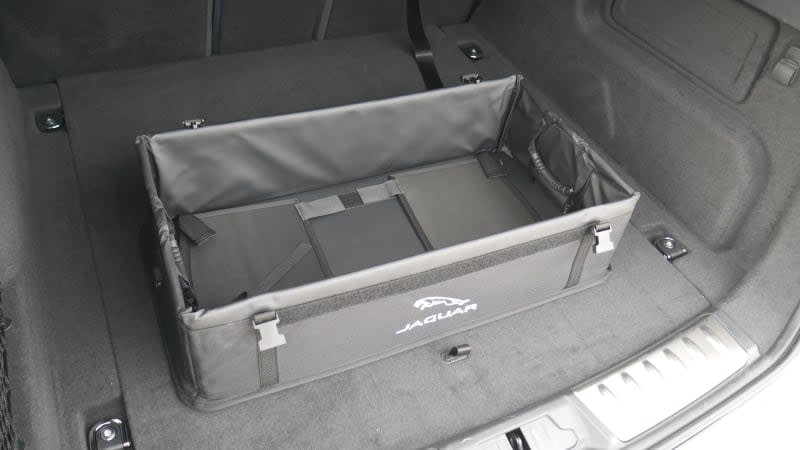
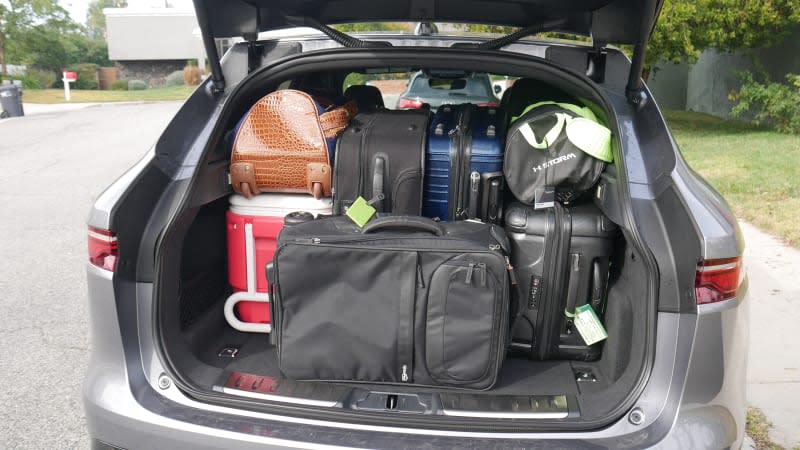
What are the F-Pace fuel economy and performance specs?
There are three versions of the F-Pace available, which align with a different engine. All come with standard all-wheel drive and a smart eight-speed automatic.
The P250 is a 2.0-liter turbocharged inline-four that produces 246 horsepower and 269 pound-feet of torque. This amount is definitely sufficient, but the resulting acceleration of 6.9 seconds from zero to 60 mph is now off the pace. Fuel economy is typical, however, with EPA estimates of 22 mpg city, 27 mpg highway and 24 mpg combined.
The P400 consists of a 3.0-liter turbocharged inline-six with a mild-hybrid system that kicks in a bit of extra oomph and smooths out the operation of the stop/start system. It produces 395 hp and 406 lb-ft of torque, and it’ll hit 60 mph in 5.1 seconds. Don’t get too excited about that “hybrid” thing, though, because it’s still a “mild” system. EPA-estimated fuel economy falls to 19/25/21.

 Yahoo Autos
Yahoo Autos 
